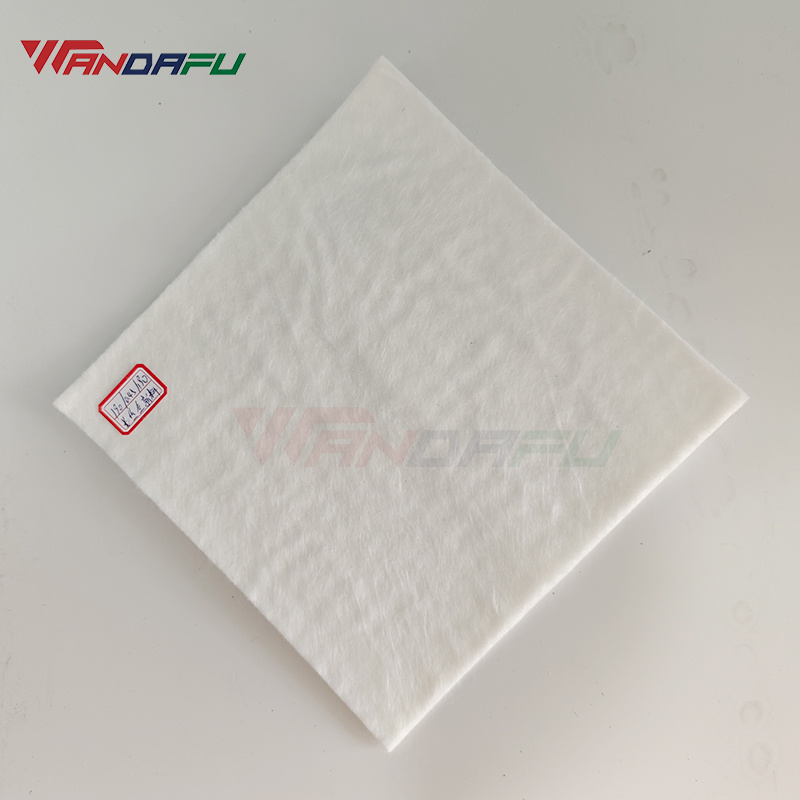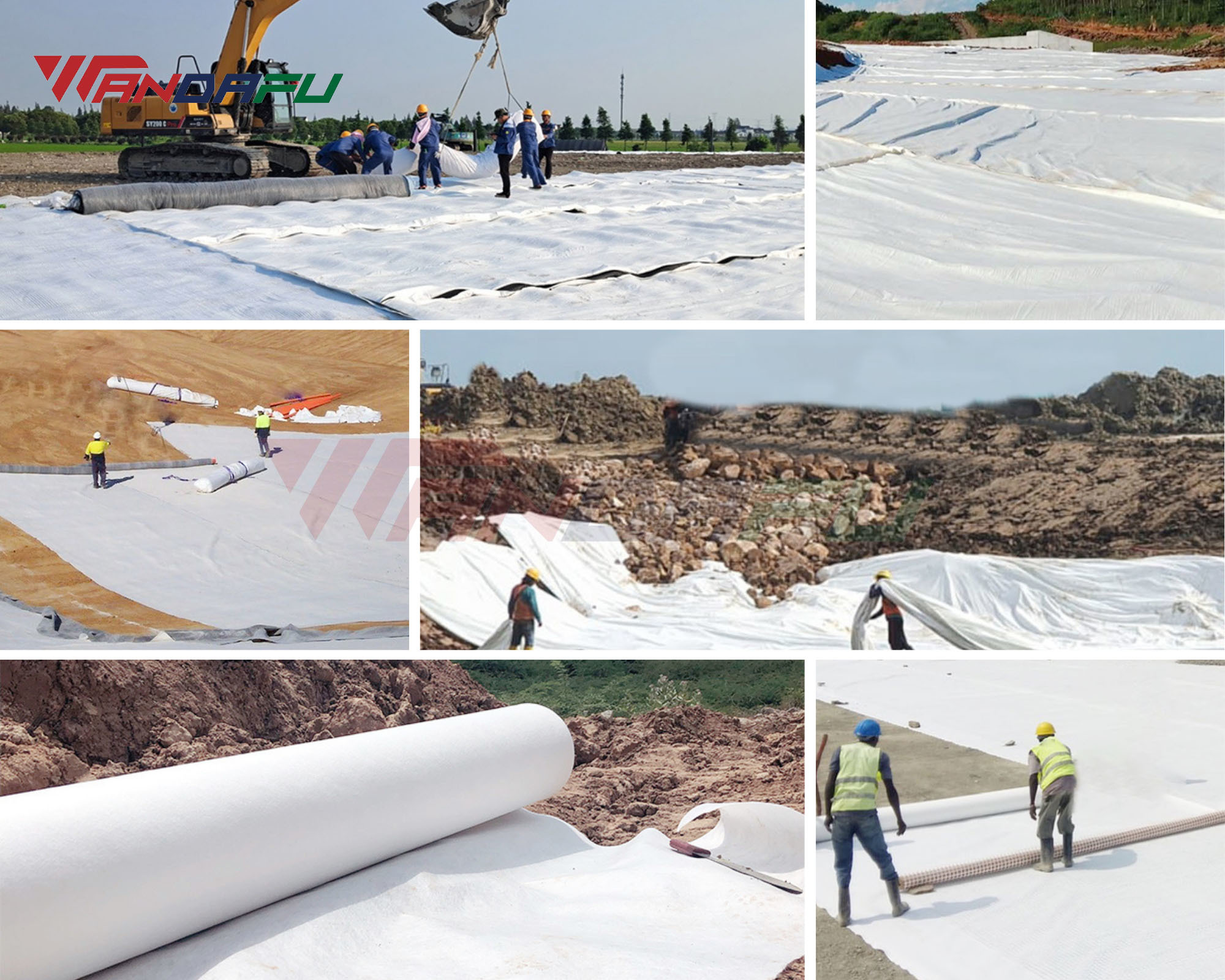
Why Non-Woven Geotextile is a Must-Have for Road Stabilization and Drainage
Release time:
2025-06-07
In modern construction projects, non-woven geotextile fabric has become an indispensable material for enhancing stability, improving drainage, and extending infrastructure lifespan. From road construction to environmental protection projects, its versatility and performance make it superior to traditional methods. This article explores why non-woven geotextile is essential for road stabilization and drainage, while also covering its wide-ranging applications in other engineering fields.
Introduction
In modern construction projects, non-woven geotextile fabric has become an indispensable material for enhancing stability, improving drainage, and extending infrastructure lifespan. From road construction to environmental protection projects, its versatility and performance make it superior to traditional methods.
This article explores why non-woven geotextile is essential for road stabilization and drainage, while also covering its wide-ranging applications in other engineering fields.

What is Non-Woven Geotextile?
Non-woven geotextile is a synthetic fabric made from polypropylene or polyester fibers, bonded together mechanically, thermally, or chemically. Unlike woven geotextiles, which have a structured grid pattern, non-woven variants have a random fiber arrangement, making them highly permeable and ideal for filtration, drainage, and reinforcement.
Key Properties:
✔ High Permeability – Allows water to pass while preventing soil erosion.
✔ Excellent Filtration – Blocks fine particles from clogging drainage systems.
✔ Durability & UV Resistance – Withstands harsh weather and heavy loads.
✔ Flexibility & Ease of Installation – Adapts to uneven terrain without tearing.
Why Non-Woven Geotextile is Essential for Road Construction
1. Prevents Soil Mixing & Enhances Stability
When constructing roads, subgrade soil can mix with the aggregate base, weakening the structure. Non-woven geotextile acts as a separator, keeping layers intact and preventing potholes and rutting.
✅ Result: Longer-lasting roads with reduced maintenance costs.
2. Improves Drainage & Reduces Water Damage
Water accumulation under pavement leads to frost heave, cracking, and premature failure. Non-woven geotextile facilitates efficient drainage by allowing water to flow through while filtering out soil particles.
✅ Result: Prevents waterlogging and extends road lifespan.
3. Reinforces Weak Subgrades
In soft or loose soil conditions, non-woven geotextile distributes load evenly, reducing stress on the subgrade. This reinforcement prevents settlement and deformation.
✅ Result: Stronger road foundations, even in unstable soils.
4. Cost-Effective Compared to Traditional Methods
Using geotextiles reduces the need for excessive gravel and sand, cutting material and labor costs. It also speeds up construction since installation is faster than traditional layering.
✅ Result: Lower project costs with higher performance.
Wide Applications of Non-Woven Geotextile
Non-woven geotextile is widely used in various engineering fields, including:
1. Transportation Infrastructure
-
Railway Subgrade Reinforcement – Enhances track stability and prevents ballast contamination.
-
Highway Maintenance – Extends pavement life by improving drainage and load distribution.
2. Water Conservancy & Coastal Engineering
-
Dam & Levee Protection – Prevents erosion and strengthens embankments.
-
Tunnel Drainage – Manages groundwater seepage in underground structures.
-
Coastal & Reclamation Projects – Stabilizes soft soils in marine environments.
3. Environmental & Landscaping Projects
-
Landfill Liners & Covers – Used in composite geomembranes for waterproofing (e.g., one fabric + one membrane, two fabrics + one membrane).
-
Erosion Control – Protects slopes from water and wind erosion.
-
Green Roofs & Urban Drainage – Supports vegetation while ensuring proper water flow.
4. Specialized Functions
✔ Waterproofing – When combined with geomembranes, non-woven geotextiles create an impermeable barrier (e.g., one fabric + one membrane or two fabrics + one membrane). The plastic film prevents water penetration, while the geotextile provides drainage.
✔ Filtration – Effectively filters soil particles, sand, and fine aggregates while maintaining water flow.
✔ Drainage – Forms internal drainage channels to remove excess water and gas from soil structures.
✔ Reinforcement – Enhances soil strength and stability, improving load-bearing capacity in weak soils.

How to Choose the Right Non-Woven Geotextile?
When selecting geotextile for road projects, consider:
🔹 Weight (GSM) – Heavier fabrics (200-400 GSM) for high-traffic roads.
🔹 Permeability – Ensures proper water flow.
🔹 Tensile Strength – Must withstand construction loads.
🔹 UV Resistance – Critical for long-term exposure.
Conclusion
Non-woven geotextile is a versatile and cost-effective solution for road stabilization, drainage, and various civil engineering applications. Its ability to filter, drain, reinforce, and waterproof makes it indispensable in modern construction.
🚧 Upgrade your projects with high-quality non-woven geotextile—contact us today for the best solutions!
Latest News



